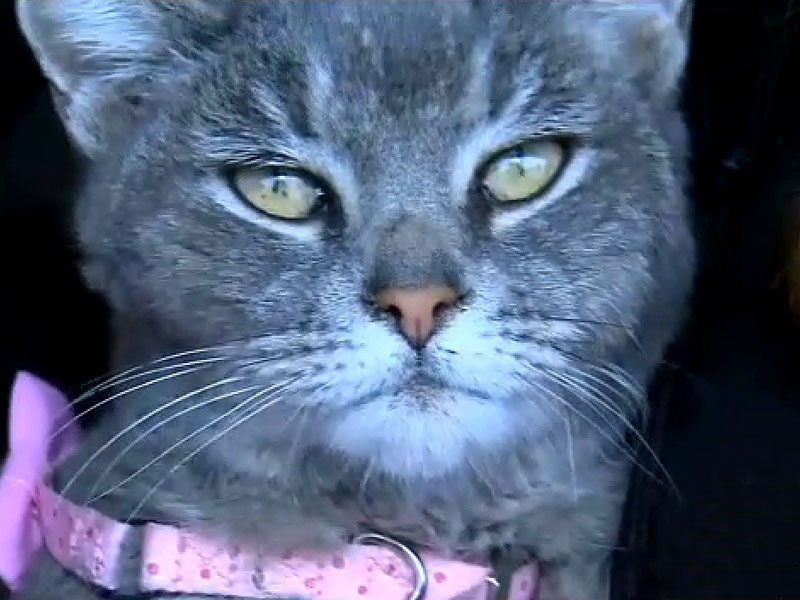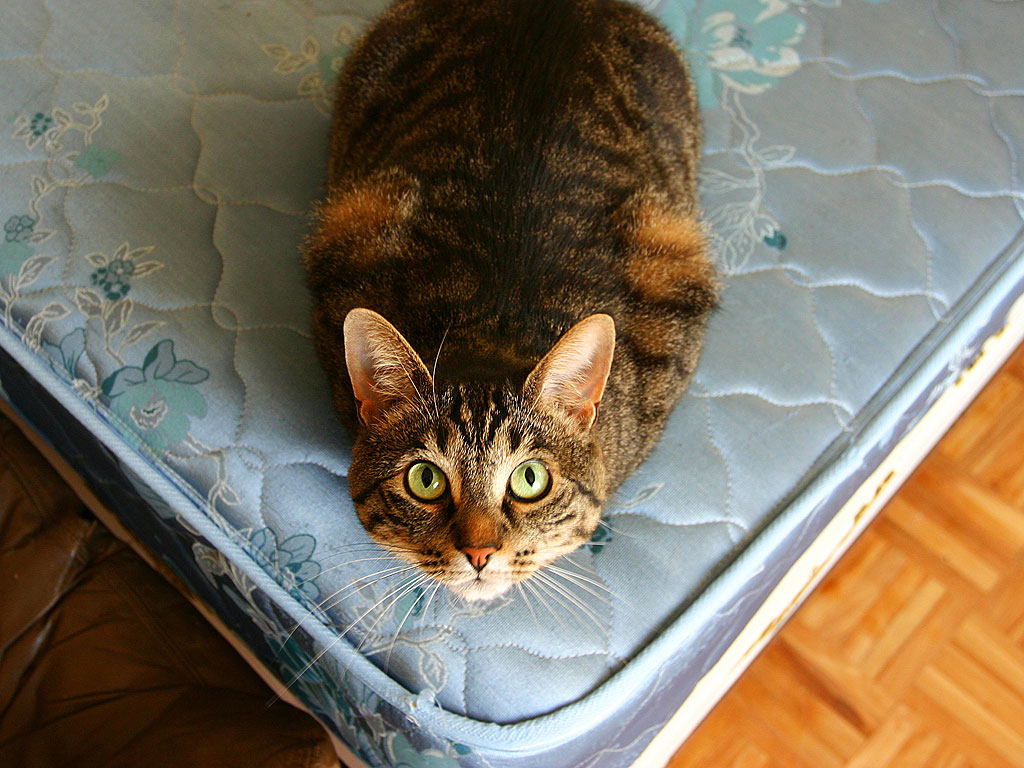1. Dogs are colorblind
Truth: The dogs see in color. However, its appearance is different from most people do and are less able to distinguish colors. Veterinary ophthalmologists determined that dogs see as people who have / red color blindness. Dogs eyes have receptors for blue and green, but there is no red shadows. So it seems that dogs can not easily distinguish between yellow, green and red, but you can identify the different shades of blue, purple and gray. The color is just one of many visual stimulation detected in the dogs their environment. Brightness, contrast, and especially the movement, are extremely important for the
interpretation of a dog you see.
2. Cats always land on their feet
Origin: In the world of cats, the most popular cliché is, "cats always land on their feet." In fact, although the cats instinctively trying to get feet often break bones or other injuries from falls from height.
Truth: This is perhaps one of the most famous and dangerous of all the myths about cats because, unfortunately, many children have tried to show that it is true. It is not. Cats are very athletic and agile animals, and have a unique instinctive ability to turn in the air to correct its position during a fall. However, if a cat is shocked, sick, disoriented or injured, it is unlikely to be able to adjust its position to land feet first. Of course, if it falls from a great height, the ability of a cat to reposition does not matter, because the force of the fall can cause serious injury or death if the cat feet hit the ground first or not. Also, if a cat falls from a short period of time, you can not have enough to turn around the earth and all feet.
3. If the nose of a dog is hot, you're sick
Origin: Non identifiable source for this myth. People just seem to think that a dog with a hot and / or dry nose is ill, and a dog with a cold wet nose is good.
Truth: If a dog has dry or hot nose, which means it has a dry or hot nose. A dry nose slightly warm or nose has nothing to do with the overall health of a dog.
4. If a dog wags its tail, she is happy
The origin: Most
dogs wag their tails when they are happy. As a result, people associate the tail wagging with a happy dog.
Truth: In most cases, a dog wagging its tail is happy, or at least expressed pleasure or excitement. Tail-wagging certainly expressed very strong smile as an emotional condition, does in people. However, as a human smile, tail wagging a dog does not necessarily reflect the happiness or something positive. Dogs often shake their tail when nervous, angry, tense, anxious, frustrated, scared, angry or aggressive. Interestingly, the researchers found that dogs usually do not wag their tails when they are alone, even though they are apparently happy or are in a nice situation. Behavior tail-wagging that seems reserved for times when the dog is in the company of others.
5. Cats have nine lives
The origin: This myth probably stems from the fact that cats are very stubborn and flexible animals, even when they are sick or injured. Cats have a great ability to get out of situations that would probably be the death of small animals. There are many reports of cats that survive for long periods of time in harsh conditions, including easy access, no food or water. The myth relates that cats always land on their feet may also contribute to the myth that cats have nine lives. Nine is considered by many to be a lucky number. In some cultures, the myth is that cats have nine lives. However, cats are considered lucky.
Truth: Of course, cats do not have "nine lives." Cats are fatal. However, they tend to be very abundant, healthy animals who can take care of themselves in almost any situation, be it inside or outside. They are agile, intelligent and witty. But, like all other mammals, cats have only one life to live.
6. A dog's mouth is cleaner than the mouth of a man
The origin: dog saliva was once considered an antiseptic, and some people still believe it has healing properties. The basis for this belief is not known.
Truth: The mouth of a dog is not "clean" the mouth of a person. Dog Saliva can be toxic to some bacteria, but carries its own population of bacteria and other infectious organisms. This population is just different variety of bacteria and other "seeds" in the human mouth, mainly based on differences in diet. There's a reason the phrase "dog breath". People whose immune system is weakened and young children probably should not be in direct contact with the dog or cat saliva.
7. A year of life of a dog is 7 years in the life of a human being
The origin: The basis of this myth remains a mystery. Probably just simple math: a dog's life average is 10 to 12 years and multiply by seven is 70 to 74 years or more the average life expectancy for people today.
Truth: Contrary to popular belief, there is no exact formula to measure the amount of a place or age in relation to aging is called dog as an individual for dogs than for people "people each year. ". Taking the age of a dog and multiply by 7 is a very simplistic formula and does not reflect the current state of development of a dog. A code is more specific:
* Dog 1 year is just a human being, 15 years,
* 2-year-old dog is like a human 24 years
* Dog 4 years, it's just a human being, 32,
* Dog 7 years, it's just a human being, 45,
* 10 dog years is like a man, 56 years old
* 15 dog years is like a human being would be 76 years
* Dog 20 years is just a human 98 years
Of course, there is a clear age difference between small dogs and large breeds. Large dogs have a much shorter life than small dogs. Its development in the early years is almost the same as other races; However, the large and giant breed dogs development are much older than the minor in his later years, about seven races.
8. You can not teach an old dog new tricks
Source: This myth probably started with someone who was not able to get your old dog to sit, roll, come or stay. He is one of the most common clichés (but false) in domestic dogs.
The truth: You can teach an old dog new tricks. Dogs can learn new tricks, skills and commands within their physical abilities until they pass. In addition, they usually want to learn. Their minds need stimulation, like ours. With patience, kindness, persistence and consistency, owners can teach old dogs new tricks of all kinds, such as sit, bark, rang the bell, sell, lie down, roll, dead and shake or "high five." While a dog is bright, alert, agile and healthy, there is no reason why you can not continue to learn new things throughout his life.
9. Cats purr because they are happy
The origin of this myth, like many others, has no precise origin. Just probably because most cats do not purr in the presence of their owners when they are pampered, which we interpret as a sign of happiness.
Truth: Most cats purr when they are happy. However, this is not the only time to purr. Sometimes, cats purr when they are sick, stressed, injured, frightened or in pain. They can also purr when they give birth, and even how they are dying. Purr seems to be more an expression of strong emotions - positive or negative - what is the expression of a particular emotion, including happiness. Purr of a cat could be similar to hum or whistle a human being is commonly done for happiness, but you can do as a result of stress, fear or discomfort.
10. Cats can see in the dark
The origin of this myth comes cats probably watch people surfing the night. Cats are often
active at night and tend to move very well in the dark.
Truth: Although cats see better in the dark people who can not see in total darkness. Students of its much larger in low light than the people, letting more light during normal business hours of dawn and dusk eyes open hunting. But again, the cats can not see in total darkness.
.jpg)
































